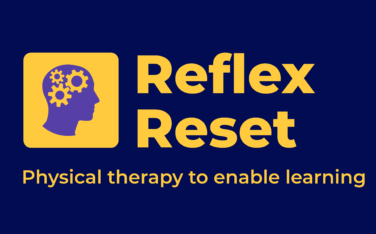The Moro reflex is triggered by all the senses
The Moro reflex is the only one of the primitive reflexes which is multisensory. It can be triggered by all the senses; that is head position (vestibular), touch, sight (visual), sound (auditory), smell (olfactory) and movement factors such as baby’s kicking or sneezing. It is the first to develop in utero and the first to be integrated. In a normal, full-term infant this will be within the first four months of life.
What is the Moro reflex?
When activated, the Moro reflex causes the baby to throw his arms open and away from his body and his hands open. His legs also abduct but to a lesser extent. At the same time, he takes in a sharp, sudden breath. After a short pause the limbs are drawn back into the body. He may well cry or be visibly upset.
What is the purpose of the Moro Reflex?
The purpose of the Moro reflex is to protect the newborn baby and enable it to survive while its fight/flight mechanism is still immature. When the Moro reflex is activated, the baby’s heart rate, rate of breathing and blood pressure are all increased which, together with crying will attract the mother’s attention and help.
The Moro reflex is one of the reflexes tested after birth. If it is not present, this may indicate that the baby is heavily sedated or that there has been a prenatal or perinatal event. It may be difficult to elicit a response in some premature babies and babies with altered tone may not show a Moro, especially those with increased tone – hypertonia. An asymmetrical response may be due to an Erb’s palsy, a fractured clavicle or humerus, or to hemiplegia.
What happens if a Moro reflex is retained?
A child with a retained Moro is likely to be hypersensitive to sensory input since it is triggered by all the senses. Therefore, where the Moro is retained, there can be profound motor and physiological effects in a child. The child is unlikely to be hypersensitive to all sensory stimulation, but he will try to ‘protect’ himself from sensory overload and so will be constantly alert and on guard which leads to exaggerated reactions to certain stimuli.
Symptoms of a retained Moro reflex
Vestibular hypersensitivity may trigger responses such as motion sickness, intolerance of fairground rides, poor coordination particularly with hand/eye movements and balance insecurity (perhaps compounded by poor postural reflexes).
Hypersensitivity to touch can lead to a child who is startled by unexpected physical contact, tickling or close physical contact and ‘invasion’ of body space.
Visual hypersensitivity can lead to several issues; visual-perceptual problems such as stimulus bound effect (eyes being drawn to the edges of shapes, scenes, pictures to the detriment of understanding of the whole image), poor reaction to light (pupil responses) and tiring under florescent lighting, photosensitivity, immature eye movements and slow reaction to fast-approaching objects such as balls.
Hypersensitivity to auditory input may result in an inability to discriminate sounds or to closing out background noise. Distractibility may be profound due to auditory overload and this can lead to fatigue.
Physiological and emotional effects of a retained Moro in a child result from the constant fight/flight preparedness and, as he matures, the learnt anticipation of his body’s nasty reaction to much of life. As a result, a child may not match his peers in apparent maturity and might develop one of two coping strategies. He may be shy and fearful, poor at peer-group relationships and coping with affection and loathing of sport or he may be aggressive, excitable, unable to read the body language of his peers and be dominating. A child with a retained Moro hates change and is unable to be flexible or adaptable to situations, especially those over which he perceives he has no control.
The biochemical effects of a Moro leads to an over-production of the stress hormones, cortisol and adrenalin. This is a double hit because these hormones are designed to increase sensitivity and reactivity. Thus a Moro child is in a loop of over-reaction to stimuli and a hormonal state which is designed to heighten such a response. Also these hormones assist the body’s defence against infection and allergy but in a child with a retained Moro, there may be a lowering of the efficacy in the immune responses and so the child is more likely to suffer from allergies, to pick up every cold going at school and perhaps have food or additive sensitivities. His glucose metabolism may be fast, also resulting in sudden onset of fatigue and mood swings. All these effects compound an already challenged situation in both the classroom and the child’s academic performance.
